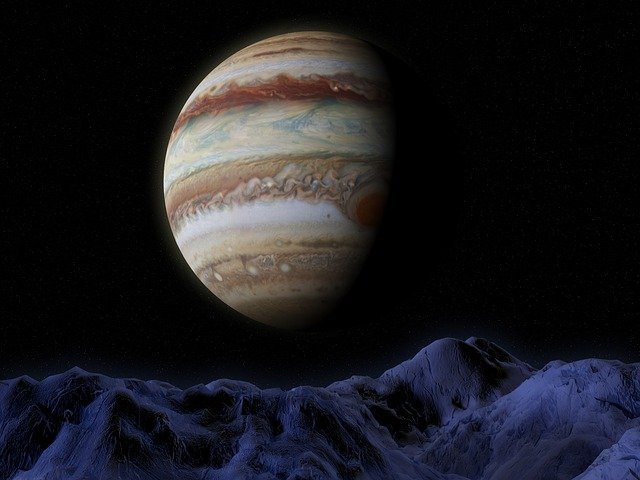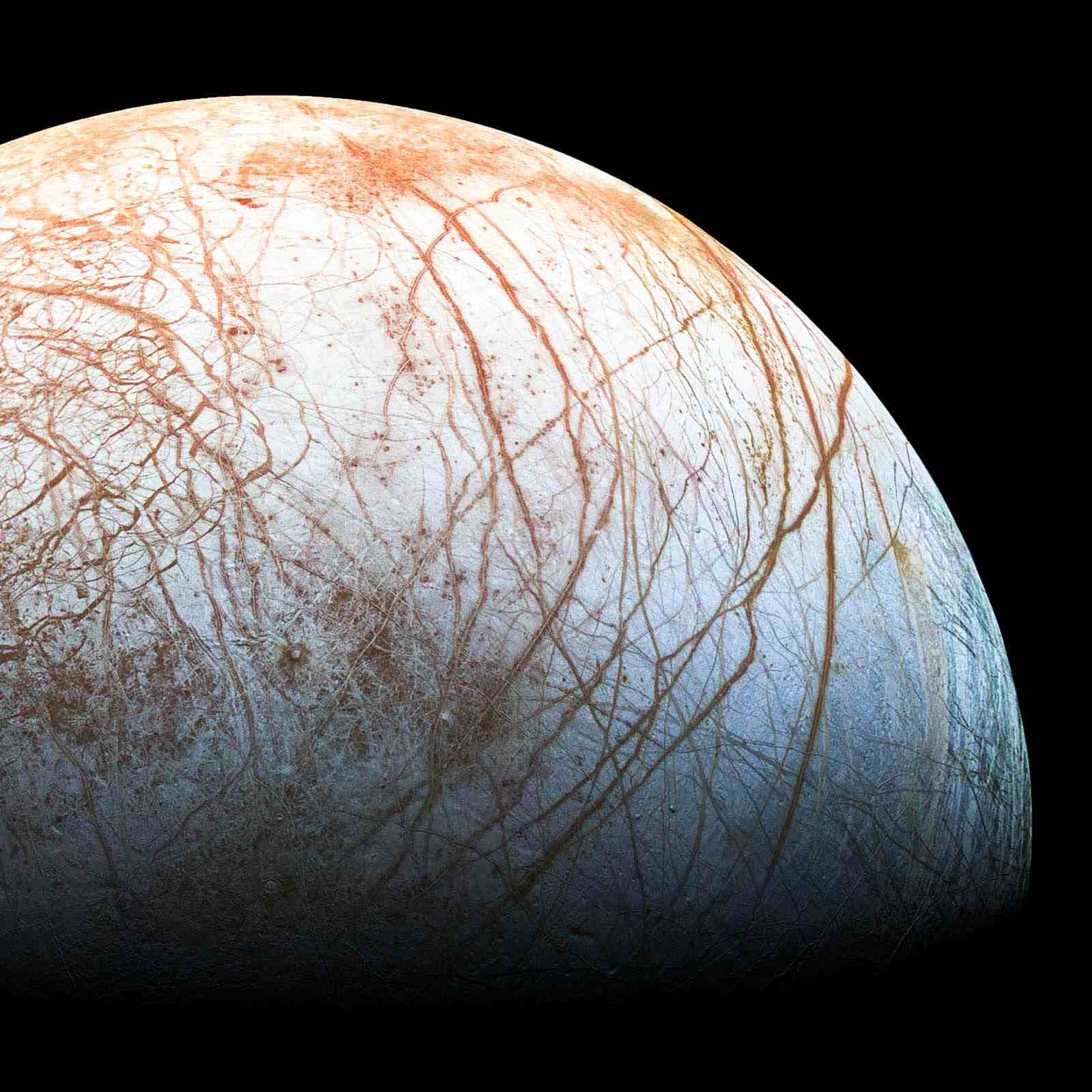*This post may contain affiliate links. This means we may make a commission if you purchase an item using one of our links*
Europa is the sixth Moon of Jupiter. It orbits the planet once every three and a half earth days and is tidally locked, meaning that it always faces Jupiter on the same side.
Continue reading to explore why Europa is tidally locked and the effects this has on both it and the planet Jupiter. The article explores Europa’s relationships with Jupiter and other moons and why these relationships could lead to the existence of new life.
Why Is Europa Tidally Locked?
Table of Contents
Tidal locking occurs when a satellite (moon’s) rotational period coincides with its orbital period around an object. In other words, if a moon revolves at the same rate as the planet it orbits, it will become tidally locked.
This phenomenon occurs when two bodies’ gravitational interactions slow down a satellite’s rotation until that satellite becomes tidally locked. This process happens over millions of years due to the exchange of energy and heat dissipation. A moon is considered tidally locked when its rotation rate no longer experiences any net change throughout one complete orbit.
One side of Europa, like Earth’s Moon, is gravitationally linked to Jupiter. As Europa revolves around Jupiter, it will always face the same direction. Its orbit isn’t a complete circle, and as a result, Europa is sometimes farther away from Jupiter and sometimes closer.
What Effect Does Being Tidally locked Have On Europa?
Europa is held in orbit around Jupiter by Jupiter’s gravitational pull. Europa’s orbit is elliptical (slightly stretched out from circular), so its distance from Jupiter changes. The moon’s near side is more severely affected by Jupiter’s gravity than the moon’s far side. As Europa orbits, the amount of this difference changes, causing tides to stretch and relax the moon’s surface.
This results in tidal heating that provides energy to the moon’s exterior and internal layers. And it is the tides of Europa that keep it from freezing solid.
If Europa’s ocean exists, tidal heating might cause volcanic or hydrothermal activity on the seafloor, supplying nutrients that could make the water habitable.
Tidal flexing provides energy to active geological processes within Europa’s interior. But could never maintain an ecosystem as vast and diverse as the photosynthesis-based ecology on Earth’s surface in Europa’s ocean.
Instead, life on Europa would most likely be concentrated around or beneath hydrothermal vents on the ocean floor. It might also cling to the lower surface of Europa’s ice layer, similar to how algae and bacteria cling to the bottom surface of Earth’s polar regions or float freely in Europa’s ocean.
However, biological processes similar to those seen on Earth would be impossible to carry out if Europa’s ocean was too cold. Similarly, if it were highly salty, only the most extreme lifeforms would survive in it.
However, Eupora may not be in a complete tidal lock with Jupiter because other research suggests that a non-synchronous rotation could exist.
Because of an asymmetry in its internal mass distribution, Europa’s rocky interior spins slower than its icy crust. This means that it could turn faster than it orbits Jupiter (or did in the past). This theory supports the idea that a liquid ocean separates Europa’s crust and core.
How Does Europa’s Tidal Locking Affect Jupiter?

Europa’s tidal locking with Jupiter is one part of the planet’s orbital system. Europe is in an orbital resonance with Ganymede and Io – the entire system coexists to exert regular gravitational influence on each other, which affects each body’s gravity, orbit, and tidal activity.
Jupiter’s equator (and the orbital planes of its moons) are just 3 degrees inclined in relation to Jupiter’s orbital route around the Sun (Earth is tilted 23.5 degrees).
Jupiter and Europa rotate nearly upright; hence, the planet and Europa and Jupiter’s other dozens of moons do not have the same harsh seasons as other planets.
Is Europa The Only Moon Tidally Locked To Jupiter?
Europa is just one of Jupiter’s tidally locked moons. The others are Metis, Adrastea, Amalthea, Thebe, Io, Ganymede, and Callisto.
Two of Jupiter’s other massive moons, Io and Ganymede, affect the gravitational forces of Europa. The gravitational pull of these moons alters Europa’s orbit around Jupiter. One of the reasons Europa’s orbit is not circular and constantly changes is because of this.
Io, Europa, and Ganymede, Jupiter’s moons, are in resonance, which means that every time Ganymede orbits Jupiter once, Europa orbits twice, and Io orbits four times. Most large satellites or planets’ orbits tend to become circular over time.
But in the case of these three satellites, the resonance causes a forced eccentricity because the satellites repeatedly line up at the same points in their orbits, giving each other a slight gravitational pull that prevents their orbits from becoming circular.
Tidal flexing kneads Europa’s interior and provides it with a source of heat, potentially allowing its ocean to remain liquid while driving deep geological processes. Jupiter’s spin is the ultimate source of this energy, which Io taps through the tides it creates on Jupiter and transfers to Europa and Ganymede via orbital resonance.
Summary
There are eight moons in a tidal lock with Jupiter due to the planet’s gravitational forces. One of these moons is Europa, a satellite with an iron-nickel core and a water-ice crust.
Europa is a source of interest because of its possibility of hosting life. This possibility exists thanks to its tidal locking with Jupiter, which provides enough energy to heat beneath Europa’s surface, thus creating an environment in which life could exist.
References
Europa: Jupiter’s Ocean World | NASA Space Place – NASA Science for Kids
In Depth | Europa – NASA Solar System Exploration
Jupiter’s moon Europa (phys.org)

